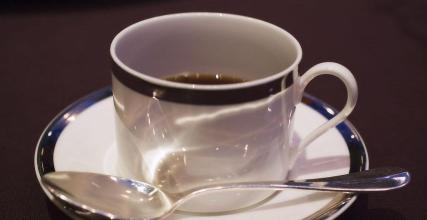Introduction to the characteristics of high-quality Rwandan boutique coffee beans flavor and taste manor
The watershed between the Congo Basin and the Nile River basin runs through Rwanda from north to south, and about 80 per cent of the country is drained from the Nile River, while about 20 per cent draws water from the Ruzizi River and Lake Tanganyika. The longest river in the country is the Nyabarongo River, which originates in the southwest and turns north, east and southeast respectively before flowing into the Ruvwu River and forming the Kagera River, which will flow due north along the eastern border of Tanzania. Both the Niabalongo and Kagera rivers will eventually flow into Lake Victoria. Rwanda has many lakes, the largest of which is Lake Kivu. Located at the base of the Albertine Rift Valley and extending along the western border of Rwanda, the lake is 480 meters deep at its deepest point, making it one of the 20 deepest lakes in the world. Other large lakes include Lake Burera, Lake Ruhondo, Lake Muhazi, Lake Rweru, and Lake Ihema, the largest of a series of lakes on the eastern plains of Akagera National Park. [2]
terrain
Rwanda is mountainous and has the title of "country of thousands of hills". The whole country is situated at high altitudes: the lowest point, the Luziji River, is 950 metres above sea level. The central west is dominated by mountains, part of the Albertine Rift Range, which in turn is part of the Great Rift Valley of East Africa and runs north to south along Rwanda's western border. The highest mountain in the country is located in the volcanic chain of the Virunga Mountains in the northwest, of which Karisin is 4507 meters higher than the volcano and is the highest geographical point in Rwanda. The mountains in the western part of the country, located in the Albertine Rift Mountain Forest Ecological Zone, range from 1500 to 2500 metres above sea level. Central Rwanda is dominated by rolling hills, while the eastern border region consists of savannas, plains and swamps. [2]
climate
Rwanda has a temperate and tropical plateau climate, with temperatures lower than typical equatorial countries due to its higher altitude. Daily temperatures in Kigali, located in the centre of the country, generally range from 12 to 27°C, with relatively small fluctuations throughout the year. There are also some places in the country with large temperature differences. The temperature in the mountainous west and north is lower than that in the low-lying areas in the east. Rwanda has two rainy seasons each year, one lasting from February to June and the second from September to October; there are also two dry seasons, the longer one from June to September, which often does not rain at all, and the other from December to February, which is relatively less severe. Rainfall varies from region to region, with more precipitation in the west and northwest than in the east and southeast. However, the rainy season pattern has changed in response to climate change. A report by strategic foresight says there are fewer rainy days each year, but more rain in short periods. In some cases, heavy downpours occur frequently in a single day, with more rainfall than in the previous month combined. There are also cases where the rainy season comes late or ends early
Coffee fruits need to be transported to the processing plant as soon as possible after picking, but due to lack of facilities in the country, it is impossible to process the fruits in the first time. The fruits accumulate together after being picked, and lack of ventilation will continue to accelerate mold and rot. The rotten fruits will affect the quality of coffee and appear defective flavor.
Rwanda has made great progress in coffee production and processing in recent years. First, coffee fruit is picked manually; coffee production cooperatives are set up all over the country to provide technical guidance to coffee farmers; coffee farmers send coffee processing stations for cleaning and screening as soon as possible after picking, and select mature and high-quality coffee fruits for processing.
Rwanda has been growing coffee since colonial times. Although coffee is the main crop, the quality of coffee produced in Rwanda is not outstanding. The status of coffee in the world is low and few people pay attention to it. Rwanda grows mostly bourbon coffee varieties. Rwanda, known as the "country of thousands of hills", has a high altitude mountain environment, fertile volcanic soil and abundant rainfall, which is conducive to the growth of coffee trees. The advantages of varieties combined with excellent natural conditions should have produced high-quality coffee, but why is the coffee quality not satisfactory? The reason lies in the later processing links. Improper processing will reduce the quality of coffee and sacrifice many good flavors in vain. Harvesting, planting, processing, grading, transportation and other links will directly affect the quality of coffee beans, one of the links of the lack of control will become a stumbling block to make good coffee

Important Notice :
前街咖啡 FrontStreet Coffee has moved to new addredd:
FrontStreet Coffee Address: 315,Donghua East Road,GuangZhou
Tel:020 38364473
- Prev

Introduction of high-quality coffee beans in Colombian coffee producing area with strong taste
In 1501, the Spaniard R.de Bastidas first reached the northern coast of Colombia and founded the city of Santa Marta in 1525. In 1533, P.de Eredia established Cartagena. In 1535, G. Simone de Xada led the Spanish colonial army into the interior of Colombia, conquered the Chibucha, established the city of Bogota, and Colombia became a Spanish colony. At the beginning
- Next

Introduction to the characteristics of Hawaiian Fine Coffee Flavor Manor
In the old days of Hawaii, there was a strict social hierarchy. The Karp system divides people's grades and stipulates that men are superior to women. The highest social classes are chiefs and priests, the lowest are slaves, and those in the middle are civilians. The Karp system stipulates where people of different levels fish and hunt, where they farm and harvest, where they swim and play on what beach, what kind of food they eat, and how they dress.
Related
- Detailed explanation of Jadeite planting Land in Panamanian Jadeite Manor introduction to the grading system of Jadeite competitive bidding, Red bid, Green bid and Rose Summer
- Story of Coffee planting in Brenka region of Costa Rica Stonehenge Manor anaerobic heavy honey treatment of flavor mouth
- What's on the barrel of Blue Mountain Coffee beans?
- Can American coffee also pull flowers? How to use hot American style to pull out a good-looking pattern?
- Can you make a cold extract with coffee beans? What is the right proportion for cold-extracted coffee formula?
- Indonesian PWN Gold Mandrine Coffee Origin Features Flavor How to Chong? Mandolin coffee is American.
- A brief introduction to the flavor characteristics of Brazilian yellow bourbon coffee beans
- What is the effect of different water quality on the flavor of cold-extracted coffee? What kind of water is best for brewing coffee?
- Why do you think of Rose Summer whenever you mention Panamanian coffee?
- Introduction to the characteristics of authentic blue mountain coffee bean producing areas? What is the CIB Coffee Authority in Jamaica?

